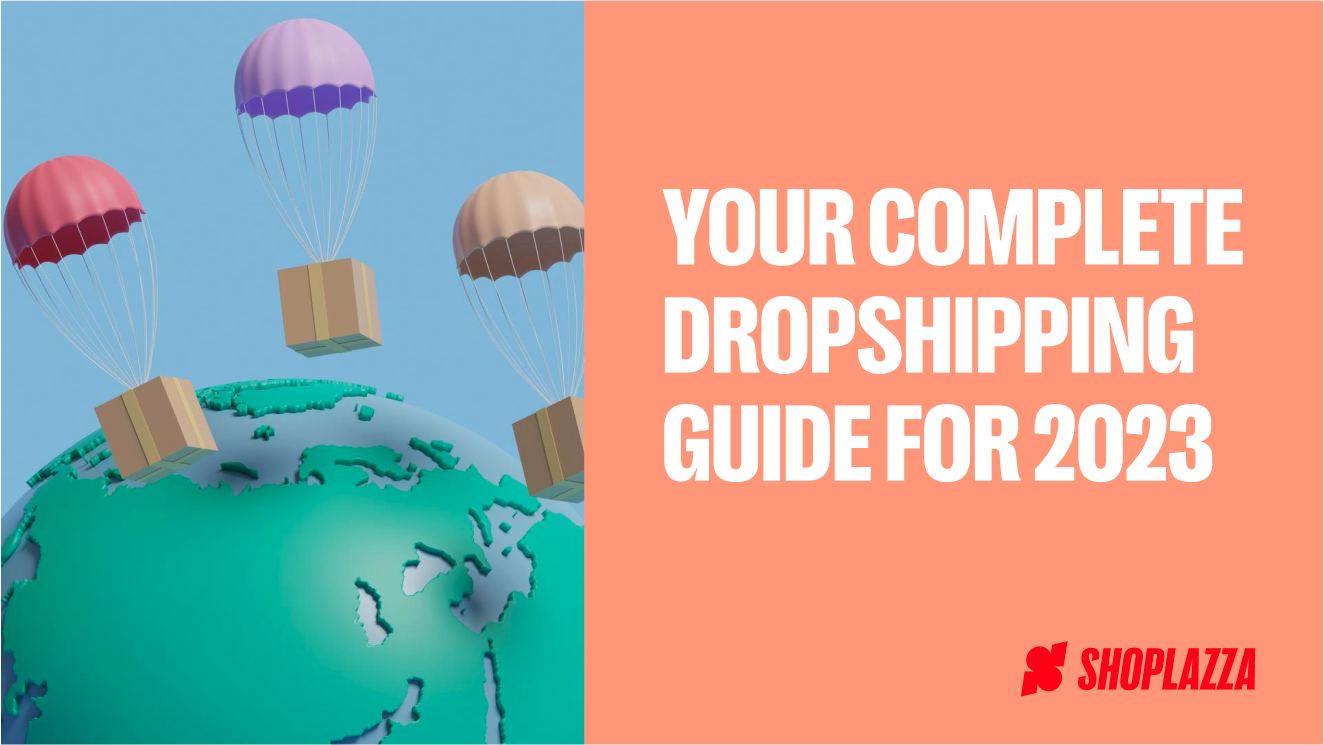
Remember how cool it was when you went into your favorite grocery store to buy eggs and came across a new brand that only worked with local farms and free-range chickens? Or maybe you just loved browsing the aisles of that big drug store in your neighborhood and got a special kick when you discovered a new brand of soap that only used organic ingredients and came in recyclable packages. Hey, I hear you: been there, done that.
Back then, it was exciting to see that some brands were taking action and trying to come up with green and environmental initiatives. But here’s the thing: being concerned with the planet and the environment is no longer just cool. It’s becoming increasingly necessary because both the planet and your customers are asking you to do so.
That’s where green marketing comes in. And while “green” here is meant to evoke the environment, it can also evoke those pretty dollar bills. Let’s see how to make this happen, shall we?
What is green marketing?
Though it has “marketing” on its name, green marketing is not concerned solely with the advertisement of eco-friendly products. It actually encompasses something bigger, since it relates more directly to the idea of corporate social responsibility.
Big words, right? But there’s no need to be scared of them because corporate social responsibility means simply adopting a business strategy that is committed to environmental, ethical, and social enhancement.
Or, to put it simply: it means to do good, and not harm.

Within this broader concept of corporate social responsibility, there’s green marketing: a term used by environmentally conscious companies that are seeking sustainable business practices.
🧑🏫 Quick note: if you decide to dig a little deeper into green marketing and stumble upon terms such as “environmental marketing” or “eco-marketing”, fear not: these are just synonyms for what we’re discussing here.
🔍 If you are looking for more info on actual marketing strategies, though, check out our guides on email marketing and affiliate marketing!
Examples of green marketing: 3 big strategies you should consider
Green marketing refers to a huge array of sustainable practices that have, as their end goal, environmental sustainability.
And while there are a whole lot of business practices that can be adopted to make this happen, there are three that really stand out — not least because they can safely be divided into the three main areas that interest any brand thinking about socially responsible products, which are: how these products are made, how they are sold, and what comes after the sale.

1. The environmental impact of making products
Production processes are a big concern for brands that manufacture their own products and for those whose business models don’t require them to actually hold inventory — yes, we’re looking at you, dropshipping.
The reason for this is pretty simple: no business can exist without a proper supply chain to back it up. And, in the world of green marketing, your supply chain needs to be as sustainable as it can be.
This can happen in a variety of ways:
🌳 Watch out for those carbon emissions and greenhouse gas emissions.
By now, you’re probably aware that every single action we take on this planet leaves behind some type of residue — and that this also applies to brands and factories. Every time a new pair of jeans is made, 1,800 gallons of water are used. And did you know that one square meter of leather produces about 17 kilos of CO₂?
These numbers are scary, and they should be. After all, they’re proof that everything has an environmental impact. They also strengthen the argument in favor of green marketing strategies.
One of those strategies is the need for decarbonization processes across a business supply chain. Some of these include:
- Renewable energy. Canada is a big proponent of renewable energy, so much so that 66% of Canadian electricity is generated through renewable sources. This is great news for Canadian entrepreneurs who want to tackle green marketing, especially those that are working with a local supply chain.
- Product packaging and fabrication. We’ll discuss both of these areas in a bit, but for now it’s worth highlighting that, in terms of green marketing and sustainable practices, how you’ll manufacture your products and how you’ll package them are both areas that deserve special attention.
- Clean tech. The concept of clean technology is really big right now, and there’s reason to believe that it will gain center stage in discussions about green marketing. In short, clean tech means the development of technologies that do not harm the environment — such as hydrogen power systems and carbon capture initiatives.

🌳 In green marketing, sourcing is key.
Sourcing products is a big step (and a big concern) for every entrepreneur: from those who are just starting out to those who want to scale their business. It is also an important factor when deciding which path your business will take towards being more environmentally conscious.
When figuring out a green sourcing strategy, the main factors you should focus on are your suppliers and your materials.
Ideally, you should look for suppliers that:
- are committed to fair trade
- conduct fair labor practices
- are explicitly committed to environmentally friendly practices (or sustainable agriculture practices, if you’re working with food and cosmetics)
- are already using renewable energy in their factories
- work with recyclable packaging
🧑🏫 Special tip for dropshippers: Since you’re not responsible for actually making your products, the best alternative is partnering with suppliers that are also adopting (or that have already adopted) a green marketing strategy.
Burt’s Bees, for instance, is one of the best examples of green marketing done right when it comes to sourcing:
Similarly, you need to look for materials that:
- are made from recyclable sources or can be recycled after their use
- have the potential to generate low carbon emissions
- can be obtained through local sourcing
🤓 Pro tip: Learn how to start an online business in Canada and start selling your eco-friendly products as soon as possible.
🌳 Think about the afterlife of your product.
Making a sale is important, but if your brand is really keen on green marketing, then you also need to think about what will happen to your product after it’s no longer usable.
How can your customers dispose of your product? Can it be safely thrown away? Do they need to be extra careful with some of its components? Will you have specific locations to collect those items?
The answers to those questions will, of course, depend on the type of products you’re selling. But, as a general rule, it’s worth keeping in mind the 3 R’s that will come up again and again in your green marketing strategy: reusable, recyclable, and repairable.
You probably won’t be able to create a sustainable product that can encompass all three, but you can surely sell products that follow at least one of them. For instance:
- If your business sells tech goods, such as headphones, car cameras, or oil diffusers, make sure these items are repairable. In green marketing terms, this can mean working with a trusted repair partner, offering a dedicated customer service channel for customers that need to repair their products, and maybe setting up a pick-up service so that your customers don’t need to personally drop off their products.
- If you’ve got your eyes set on an eco-friendly product, then recyclable solutions will be a big part of your strategy. If you’re manufacturing your own products, then consider using recycled materials or perhaps creating an item that can be recycled after use — there are quite a lot of up-and-coming brands that are currently following this trend.
- Does your entrepreneurial journey involve starting a garment store? Then perhaps going reusable is the way to go. Examples of green marketing strategies that focus on reusable solutions include, for instance, sourcing fabrics that were disposed of by bigger brands or reselling vintage clothes.
2. How to sell your green products
Now that you’ve got sourcing all figured out, it’s time we focus on another important step of any green marketing strategy: actually selling your products.
🌳 An eco-friendly package can speak volumes.
One of the best ways to show off your brand’s commitment to eco-friendly practices is to design a package that is sustainable and leaves little to no residue behind.

Yes, it’s time to cut down on that preposterous amount of styrofoam when shipping out fragile products. You can also ditch those ugly plastic security bags that have become so widely used for international shipping.
Instead, try some of the following:
- Plant-based packaging
- Plantable packaging
- Biodegradable packaging
- Recyclable packaging
- Smaller packages
- Sustainable alternatives for some old-time favorites: out with the plastic bubble wrap, in with the corrugated bubble wrap.
When it comes to sustainable packaging, Numi Tea is one of the best green marketing examples around:
🌳 Shipping needs to be a green initiative.
Whether you’re manufacturing your own products or selling dropshipping products, shipping is probably always on your mind. After all, there’s a lot you need to figure out: how much will you charge for shipping, what are the estimated delivery dates, which company will deliver your goods to the customers, and — the mother of all worries — will you offer free shipping to your customers?
But if you are concerned with environmental issues and want to adopt a green marketing strategy, then you also need to think about how to make your shipping efforts a little more sustainable.

If you are opting for green or eco-friendly packaging, that’s already a big step in the right direction. But if you’re selling locally, why not offer some of the initiatives below?
- Offer a bicycle delivery service for neighborhoods that are closer to your brand’s headquarters or your supplier’s warehouse. You can set up a fixed price for this and highlight the environmental benefits on your website.
- Seek out carriers and freight services that are committed to green initiatives and try to negotiate feasible prices with them.
- If you’re working with dropshipping, try to favor local suppliers instead of international ones. That way, you can probably lower your shipping costs and lower those carbon emissions as well.
📦 Don’t forget to check out some of the shipping solutions for small businesses that Canada Post currently offers. You can also explore our quick guide on shipping with USPS.
🌳 Market your product accordingly — and accurately.
You obviously need to market your product accordingly, right? Because even though green marketing is not just about marketing, it still involves… well, marketing.
So let’s check out how you can let the world know about your products:
- Take it to social media: Make special announcement posts to notify your followers about the green initiatives your brand is adopting. Be sure to explain exactly what you’re doing, how you’re doing it, and what are the environmental benefits of those moves. Oh, and if you’re not on social yet, get to it: Instagram, Tiktok, Twitter, YouTube… whatever works best for you and your business. Just remember to always be where your customers are!
- Don’t be stingy with your product descriptions: Product descriptions are where your potential customers get all the info they need before making a purchase, so why not make the most of it? Instead of listing merely the size, color or shipping methods available, make use of this space to create an enticing description and highlight the recycled materials that were used in your product. You can also list the location from where it was sourced and describe the production processes.
- Create a FAQ section: Going green involves a lot of things, and your customers will likely want to know more about the brand. A FAQ section can be a great ally in condensing all the relevant information you have in one single place. If you’re looking for examples of green marketing from brands that follow this approach, try Ollie, a brand that specializes in dog food. Their FAQ section is pretty comprehensive, and they also have a shortened FAQ section on their “How It Works” page.
📱 Also, be sure to check out the resources below — they’ll tell you everything you need to know about marketing on social media so you can start your green marketing campaigns as soon as possible!
- Quick Guide: Get Ready To Sell On Social Media!
- Use TikTok Business to Build your Power Business Community at Shoplazza
- Use Facebook Live To Increase Your Sales!
- Google Ads: Smart Holiday Campaign Strategies
3. What to do after you sell: philanthropic work
Green marketing strategies don’t end after you make a sale. If you really want your brand to commit to sustainability, then you also need to redirect part of your profits toward that goal.
To do that, consider partnering with NGOs or institutions that are doing work you believe in and/or that is aligned with your brand’s mission — and, of course, do some philanthropic work that will have a direct positive impact on local communities.
If you want to check out one of the great examples of green marketing done right on this topic, you cannot miss Toms. Their website has a whole “Impact” section, where they describe their really inspiring philanthropic work.
✍️ Green marketing pro tip: A blog can do wonders for a sustainable brand. You can start yours today and use it as a channel to spotlight your brand’s philanthropic work. Oh, and while you’re at it, consider crafting an “About” page too.
Do green marketing practices, but don’t do greenwashing
Don’t believe in everything that claims to be green — and do not go around advertising your business as green if it is not, because then you’ll be committing greenwashing.
Greenwashing is when a company or a brand puts out unfounded claims about their products being eco-friendly when they’re not. Another example of this illegal practice includes advertising sustainable sourcing practices when this is not actually the case.
This is a crucial matter because it can have legal repercussions that could potentially tarnish your brand’s reputation. If you are set on being green, then be serious about it.
🍁 If you’re based in Canada, remember to check out the government’s guidelines on environmental claims and greenwashing. It’s pretty comprehensive and has a lot of important info you need to consider before you start advertising your products.
How can small businesses be environmentally conscious?
The road to sustainability can be a little bumpy if you don’t do some careful planning. It can also involve some costs that you didn’t budget for when you decided to start your business, which is why some people say that green marketing only works if you are a big company and you’re willing to spend a lot of money.
But that isn’t necessarily the case, because here’s the thing: you don’t have to change every single aspect of your business right upfront. You can start small, one step at a time. Instead of changing all your products, try working first with an exclusive eco-friendly line of products. Instead of investing part of your profits right away, partner with small NGOs in your local community.
When done right, green marketing can be a win-win situation. You’ll be able to cultivate high-value customers, and those customers will be proud to acquire your products. Oh, and the planet and future generations also win — and let’s face it: that’s the most important thing.
🔥 Bitten by the entrepreneurial bug yet? Check out some business ideas that go hand in hand with green marketing initiatives:



